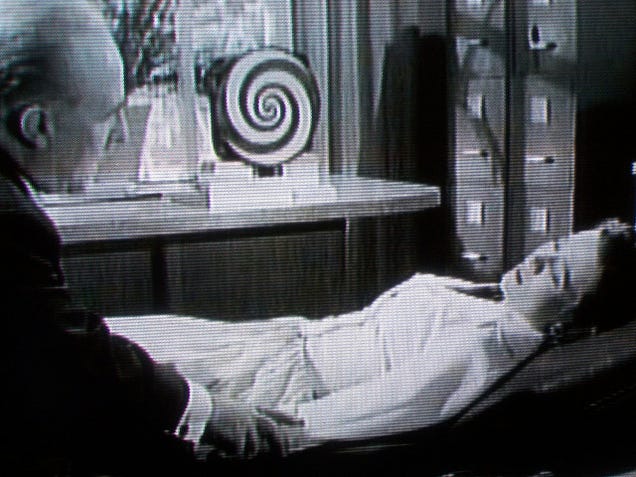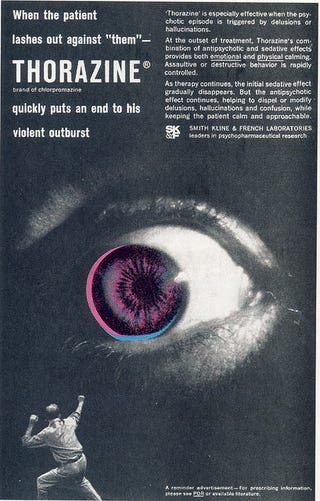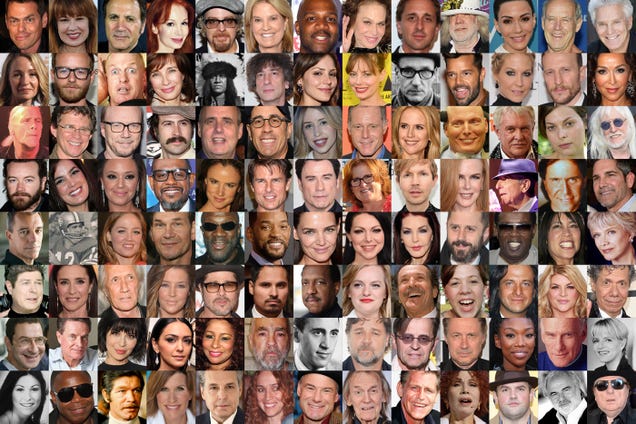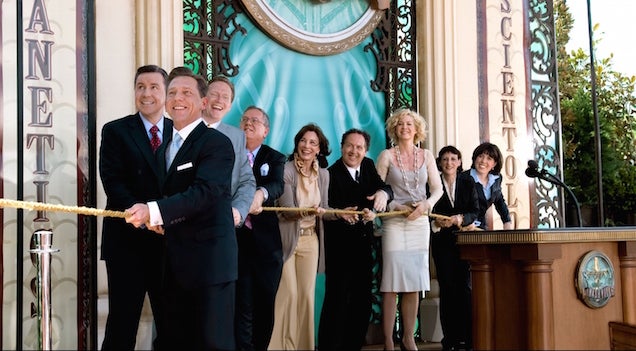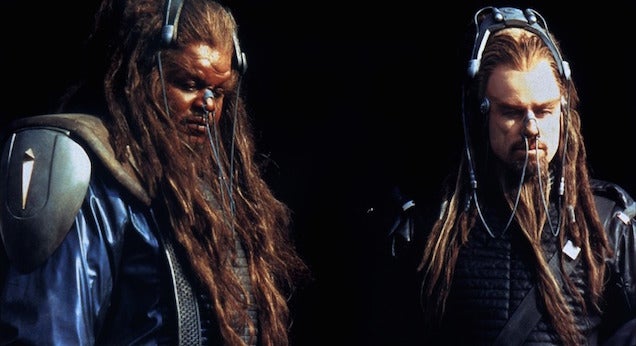![A Comprehensive Updated List of Every Celebrity Linked to Scientology]()
L. Ron Hubbard began Scientology’s “Project Celebrity” in 1955, offering a list of 63 high-profile targets and a “small plaque” as a reward to anyone who successfully brought the likes of Bob Hope and Ernest Hemingway into the church. “There are many to whom America and the world listens...” Scientology’s blustery founder wrote in a newsletter announcing the plan. “It is obvious what would happen to Scientology if prime communicators benefitting from it would mention it now and then.” Sixty years later, was Project Celebrity a success?
That Hollywood is overrun with adherents to the religion of Xenu is generally taken for granted as fact. Everyone knows about Tom Cruise, John Travolta, and Beck; casual followers of Scientology or celebrity gossip may also know Kirstie Alley, Giovanni Ribisi, Juliette Lewis, and recent apostate Leah Remini. But who else? Below, you’ll find a list of every known celebrity who claims membership with the church, as well as lists of those who have dabbled in a few courses but never enlisted and of those who were once members but have since renounced their affiliation. Our definition of celebrity is relatively broad: you’ll find actors, mostly, but also a handful of musicians, screenwriters, directors, businesspeople.
The list is intended to be comprehensive, so if there are people we’ve missed, please let us know in the comments or email me at andy@gawker.com. We’ll keep rolling updates as celebrities join, defect, or go public with their affiliation.
Confirmed Scientologists
All of the Church’s active, dyed-in-the-wool celebrity members, and those who were members at the time of their deaths.
Kirstie Alley [Wiki] [IMDb] [source]
![A Comprehensive Updated List of Every Celebrity Linked to Scientology]()
Anne Archer (center) with David Miscavige (left). Image via Church of Scientology. [Wiki] [IMDb] [source]
Lynsey Bartilson [Wiki] [IMDb] [source]
Beck: Perhaps the highest-profile Scientologist this side of Cruise and Travolta, Beck kept quiet about his lifelong involvement with the church—both his parents are Scientologists—until 2005. When New York mag asked about his involvement with the church in 2012, Beck was equivocal, acknowledging his lifelong affiliation but saying “It’s just something that I’ve been around.”
Catherine Bell [Wiki] [IMDb] [source]
Karen Black [Wiki] [IMDb] [source]
Sonny Bono: Bono began a relationship with the church in the 1970s, his assistant told the New York Post in 1999, “because Cher wanted him to go”—odd, considering that Cher, who is not a Scientologist, once told Access Hollywood that she “didn’t understand” her ex-husband’s religion. In the same Post article, Sonny’s widow Mary Bono said that Sonny “did try to break away [from the church] at one point,” in the early ‘90s, “and they made it very difficult for him.”
Stephen Boyd: Ben-Hur actor Boyd, who died in 1977, was an OT IV, according to George Malko’s book Scientology: The Now Religion. According to Fantastic Voyage co-star Raquel Welch, Boyd was also gay and closeted.
Grant Cardone: Cardone, an author and motivational speaker who hosted the short-lived Kitchen Nightmares-style reality show Turnaround King, is an OT VIII—Scientology’s highest auditing level— and enthusiastic L. Ron Hubbard disciple. According to longtime Scientology chronicler Tony Ortega, ardone once embarked on an email campaign to slander Milton Katselas, another high-ranking Scientologist, at the behest of megalomaniacal church leader David Miscavige. (Katselas, a well-known acting coach, was punished for not being “loyal enough to the new Miscavige regime and way of doing things,” Ortega writes.)
Nancy Cartwright: The voice of Bart, Nelson, Todd Flanders, and Ralph Wiggum on The Simpsons has been a Scientologist since 1989. In 2007, Cartwright made a $10 million donation to the church. Two years later, she drew fire for using the Bart voice in a Scientology-promoting robocall, which is just as unsettling as it sounds.
Kate Ceberano [Wiki] [source]
Erika Christensen [Wiki] [IMDb] [source]
Jeff Conaway: Conaway, who played Kenickie in the film version of Grease, joined after co-star and Scientologist poster boy John Travolta “introduced him to the church, giving him an auditor and a library of Scientology books,” according to Business Insider.
Chick Corea [Wiki] [source]
![A Comprehensive Updated List of Every Celebrity Linked to Scientology]()
Tom Cruise with David Miscavige. Image via AP.
The smiling, shrink-hating, spy-hiring, motorcycle-riding, and couch-jumping mascot of Scientology, Cruise has been the church’s biggest star since joining at the behest of then-wife Mimi Rogers in 1990. Since then, his exploits in the name of Scientology have been too numerous to recount here; in 2012, he and Katie Holmes divorced in part because Holmes didn’t want the couple’s daughter Suri to become involved with the church.
Sky Dayton: EarthLink and Boingo Wireless founder Dayton attended the Scientology-affiliated Delphian boarding school in Oregon. He is identified as a Scientologist in Lawrence Wright’s “The Apostate,” the New Yorker article that became the book that became Going Clear, HBO’s Scientology documentary. According to Fox News, Boingo was named after the band Oingo Boingo, whose founder Richard Elfman is also a Scientologist.
Eddie Deezen: Like Jeff Conaway, Grease actor Deezen began to pursue Scientology after meeting Travolta. “Seeing what an extraordinary guy [Travolta] was, just such a nice person, such a kind human being, did make me think, but it was probably my first impulse of curiosity concerning Scientology,” he told Vice in 2012, adding that he hasn’t “been very active [in the church] lately.”
Jason Dohring [Wiki] [IMDb] [source]
Robert Duggan [Wiki] [source]
Bodhi Elfman [Wiki] [IMDb] [source]
![A Comprehensive Updated List of Every Celebrity Linked to Scientology]()
Jenna Elfman at the opening of Nashville’s Scientology church and Celebrity Centre. Image via Church of Scientology. [Wiki] [IMDb] [source]
Richard Elfman: Father of Bodhi and father-in-law of Jenna, Richard Elfman is identified by Tony Ortega as “an avid member of the church” “to this day.” It should probably be noted here that Danny Elfman, the film composer and Richard’s brother and partner in Oingo Boingo, is not a Scientologist, despite the family ties.
Doug E. Fresh: The ‘80s rapper/beatboxer has a track on “The Joy of Creating,” an L. Ron Hubbard-tribute album. Fresh’s contribution is truly a joy.
Peaches Geldof: The late daughter of rock-star/activist Bob Geldof went public with her Scientology membership shortly after Gawker posted one man’s account of a heroin-fueled one-night stand with Geldof that ended at Scientology’s Hollywood Celebrity Centre.
![A Comprehensive Updated List of Every Celebrity Linked to Scientology]()
Isaac Hayes onstage at a 2005 Celebrity Centre gala. Image via Getty. Soul legend Hayes famously left his gig voicing South Park’s “Chef” after refusing to participate in an episode that skewered Scientology.
Gary Imhoff [Wiki] [IMDb] [source]
Mark Isham [Wiki] [IMDb] [source]
Jocelyn Jones [Wiki] [IMDb] [source]
Kimberley Kates [Wiki] [IMDb] [source]
Milton Katselas: Katselas, who coached everyone from Burt Reynolds to Giovanni Ribisi—also a Scientologist—is called “the best acting teacher in the world” in a 2007 New York Times profile. he same profile alleges that some actors have left Katselas’ classes “because of the unspoken pressure they felt to join the Church of Scientology.”
Vivian Kubrick [Wiki] [IMDb] [source]
Jason Lee: Lee, star of mid-aughts sitcom My Name Is Earl, is a Scientologist, as is Earl co-star Ethan Suplee. Frequent Earl guest Giovanni Ribisi is a Scientologist, and so is Juliette Lewis, who appeared in one episode. According to a TV critic at the Guardian, the plot of the entire series has shades of Hubbard-inspired allegory.
Geoffrey Lewis [Wiki] [IMDb] [source]
Juliette Lewis: Musician and actress Lewis, who was raised in the church, told a Daily Beast reporter last year that the public is unkind to Scientology because “The mainstream media is funded by pharmaceutical companies, so when you have the biggest movie star in the world at the time—Tom Cruise—coming out against anti-depressants and Ritalin and just saying, ‘Hey, why don’t you put a warning label on there?’ The thing about Scientology is it is anti-drug in that you’re seeking relationship or communication tools—simple basics on how to live better.”
Christopher Masterson [Wiki] [IMDb] [source]
![A Comprehensive Updated List of Every Celebrity Linked to Scientology]()
Danny Masterson onstage at a 2005 Celebrity Center benefit event with fellow Scientologist Laura Prepon. Image via Getty. [Wiki] [IMDb] [source]
Jim Meskimen [Wiki] [IMDb] [source]
Julia Migenes [Wiki] [IMDb] [source]
Sofia Milos [Wiki] [IMDb] [source]
Elisabeth Moss [Wiki] [IMDb] [source]
Floyd Mutrux [Wiki] [IMDb] [source]
Haywood Nelson [Wiki] [IMDb] [source]
Marisol Nichols [Wiki] [IMDb] [source]
Judy Norton-Taylor [Wiki] [IMDb] [source]
Eduardo Palomo [Wiki] [IMDb] [source]
Michael Peña [Wiki] [IMDb] [source]
Priscilla Presley: Elvis, Priscilla’s ex-husband, was no fan of the church, according to the book Elvis Aaron Presley: Revelations From The Memphis Mafia. “Fuck those people! There’s no way I’ll ever get involved with that son-of-a-bitchin’ group. All they want is my money,” Elvis allegedly shouted after a meeting with Scientologists in Hollywood.
Bijou Phillips [Wiki] [IMDb] [source]
Laura Prepon [Wiki] [IMDb] [source]
Kelly Preston [Wiki] [IMDb] [source]
Jeff Pomerantz [IMDb] [source]
Lee Purcell [Wiki] [IMDb] [source]
Giovanni Ribisi [Wiki] [IMDb] [source]
Marissa Ribisi [Wiki] [IMDb] [source]
Michael D. Roberts [Wiki] [IMDb] [source]
Ruddy Rodríguez [Wiki] [IMDb] [source]
Billy Sheehan [Wiki] [source]
Dror Soref [Wiki] [IMDb] [source]
Frank Stallone: Watch Sly’s brother belt out “The Evil Purpose” and “Road to Freedom,” two songs penned by Hubbard, live in concert right here.
Ethan Suplee [Wiki] [IMDb] [source]
Greta Van Susteren [Wiki] [source]
![A Comprehensive Updated List of Every Celebrity Linked to Scientology]()
John Travolta holding an E-meter, the polygraph-like device used during Scientology’s auditing sessions. Image via Going Clear.
According to ex-Scientology executive Marty Rathbun in the HBO documentary Going Clear, Travolta is “Scientology’s captive” because of all the dirt he’s given the church during auditing sessions. “There were rumors that he was threatening to leave,” adds New Yorker writer Lawrence Wright. “And another Scientologist told me that he was delegated to create a “black PR” package—all the damaging material that they could use against Travolta, which came from his auditing sessions.” Perhaps that “damaging material” contains information regarding the widespread rumor that Travolta is gay.
Manu Tupou [Wiki] [IMDb] [source]
Edgar Winter [Wiki] [source]
Michael Wiseman [Wiki] [IMDb] [source]
Rumored/Dabblers
The celebrities who have “taken a couple courses” or “done some studying” on Scientology, but are not actually members of the church.
Mikhail Baryshnikov: Travolta introduced the dancer to the church, according to Lawrence Wright’s Going Clear, but Baryshnikov didn’t stick with it.
Brandy [Wiki] [IMDb] [source]
David Carradine: A student of Scientologist acting coach Milton Katselas, Carradine told the New York Times Magazine in 2007, “I went down and took a couple of classes. I’m no kind of Scientologist, but I’ve been around it enough to know it’s a very intelligent thing.”
Leonard Cohen: Going Clear cites Cohen as having “passed through” one of Scientology’s Celebrity Centres, and the song “Famous Blue Raincoat” contains an apparent reference to the church.
Russell Crowe [Wiki] [IMDb] [source]
Anne Francis [Wiki] [IMDb] [source]
Chaka Khan [Wiki] [source]
Ernest Lehman [Wiki] [IMDb] [source]
Charles Manson: According to Manson biographer Jeff Guinn as excerpted in LA Weekly, while in prison, “Charlie adopted those aspects of Hubbard’s teachings that lent themselves to manipulating others. “His September 1961 report [by prison officials] noted, ‘He appears to have developed a certain amount of insight into his problems through the study of [Scientology]. Manson is making progress for the first time in his life.”
Gordon Lightfoot [Wiki] [source]
Ricky Martin [Wiki] [source]
Katherine McPhee [Wiki] [source]
Van Morrison: An auditor told Morrison biographer Steve Turner that the singer once had a “basic involvement” with Scientology, according to the Rolling Stone. Morrison gives Hubbard “special thanks” in the liner notes to his 1983 album Inarticulate Speech of the Heart.
Lou Rawls [Wiki] [source]
Brad Pitt: According to writer and former Scientologist Amy Scobee, Pitt completed two courses in the early ‘90s while dating Scientologist Juliette Lewis, but decided that the church wasn’t for him.
J.D. Salinger [Wiki] [source]
Jerry Seinfeld: “I last really studied [Scientology], oh, it’s almost 30 years ago...In my early years of stand-up, it was very helpful,” Seinfeld told Parade in 2008. “I took a couple of courses. One of them was in communication, and I learned some things about communication that really got my act going.”
Jada Pinkett Smith: In 2008, Jada Pinkett Smith and her husband founded a now-defunct school that used L. Ron Hubbard’s “Study Technology” and “ideas from Scientology ‘ethics,’” Scientology expert Tony Ortega writes. According to Ortega, Jada was “the dedicated Scientologist in the family,” but both Smiths have since ended their connections with the church.
Will Smith: Rumors about Smith’s connections with the church are rampant, and the New York Daily News reported in 2008 that he was actively recruiting for the church on the set of Hancock. But according to Ortega and former church executive Mike Rinder, the rumors aren’t true. “Will Smith is not a Scientologist,” both men told the Daily Beast in March.
Patrick Swayze: The late actor is also among those who Travolta briefly introduced to the church.
![A Comprehensive Updated List of Every Celebrity Linked to Scientology]()
Forest Whitaker with John Travolta in Battlefield Earth, a film based on a book by L. Ron Hubbard. Whitaker also had a short Scientology dalliance inspired by Travolta, according to Going Clear.
Former Scientologists
Celebrities who were once full-fledged members of the church, but have since exited.
Larry Anderson [Wiki] [IMDb] [source]
Jason Beghe [Wiki] [IMDb] [source]
Tom Berenger [Wiki] [IMDb] [source]
Nazanin Boniadi: Boniadi, who dated Tom Cruise in 2005, was allegedly groomed by the church to be Cruise’s wife. Cruise apparently broke up with her after she insulted Scientology chief David Miscavige. When she complained about the break-up, a friend reported her to the church, and she was allegedly forced to clean toilets with a toothbrush as punishment.
John Brodie [Wiki] [source]
![A Comprehensive Updated List of Every Celebrity Linked to Scientology]()
William S. Burroughs’ book Ali’s Smile: Naked Scientology, published in 1970 after the writer denounced and was expelled from the church in 1968. Image via Wikipedia. [Wiki] [source]
Diana Canova [Wiki] [IMDb] [source]
Michael Fairman [Wiki] [IMDb] [source]
Neil Gaiman [Wiki] [source]
Paul Haggis [Wiki] [IMDb] [source]
Katie Holmes: Holmes, of course, is another of Tom Cruise’s ex-Scientologist exes.
Leif Garrett [Wiki] [IMDb] [source]
Nicole Kidman: Kidman, too, terminated all Scientology affiliation when she divorced Cruise. Ex-Scientology exec Marty Rathbun said in 2012 that David Miscavige was “central” to the split.
Carmen Llewelyn: “Scientologists followed me down the street. They took pictures of my kids. They’d stake out my house, wait until we came out and follow us,” the actress said after her divorce from Scientologist Jason Lee and exit from the church.
Vince Offer [Wiki] [IMDb] [source]
Lisa Marie Presley [Wiki] [source]
Christopher Reeve [Wiki] [IMDb] [source]
Leah Remini [Wiki] [IMDb] [source]
Mimi Rogers: Rogers, Tom Cruise’s first wife, introduced Cruise to the church in 1990. Miscavige also played a large role in their divorce, according to Rathbun. “[Rogers] no longer seems to be active in the Church of Scientology, but refuses to confirm it,” the Telegraph wrote in 2001.
Don Simpson [Wiki] [IMDb] [source]
Jeffrey Tambor: The Arrested Development and Transparent actor, who took classes with Scientologist acting coach Milton Katselas, told LA.com “I have nothing against it, but I am no longer a Scientologist” after the New York Times Magazine identified him as such in 2007.
Photos via Getty, AP, IMDb, and Wikipedia. Contact the author at andy@gawker.com.



